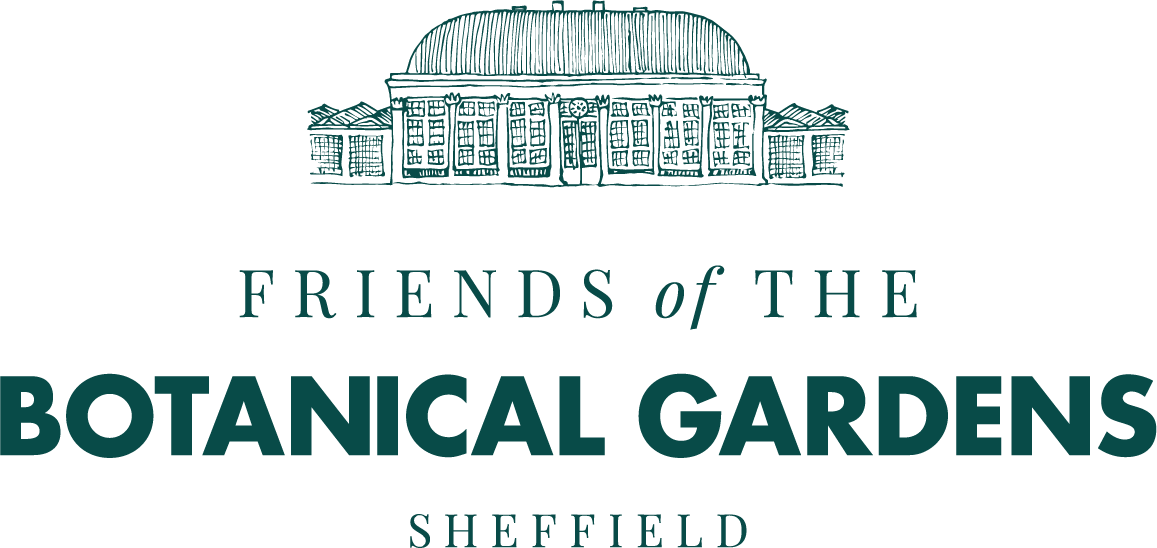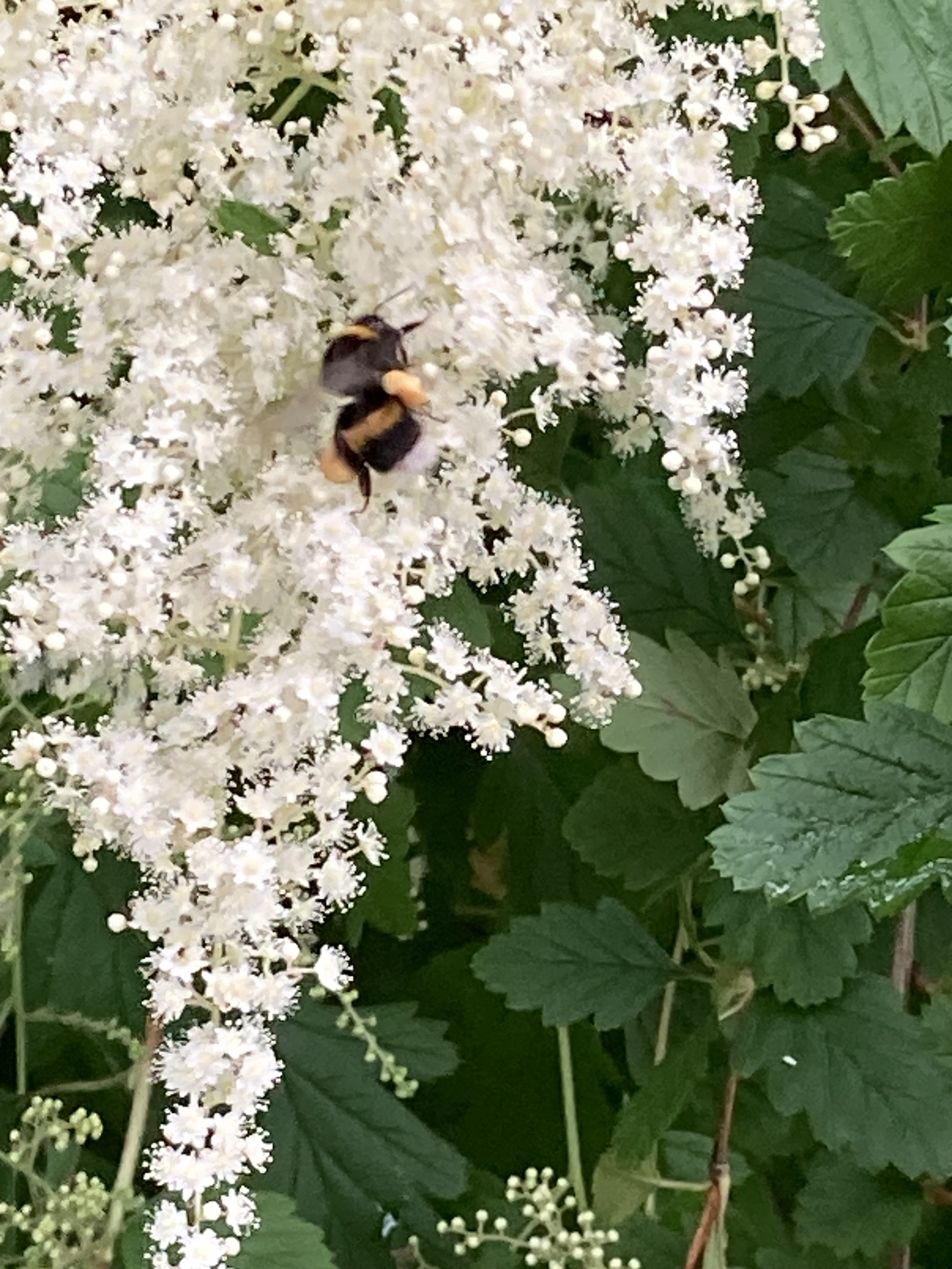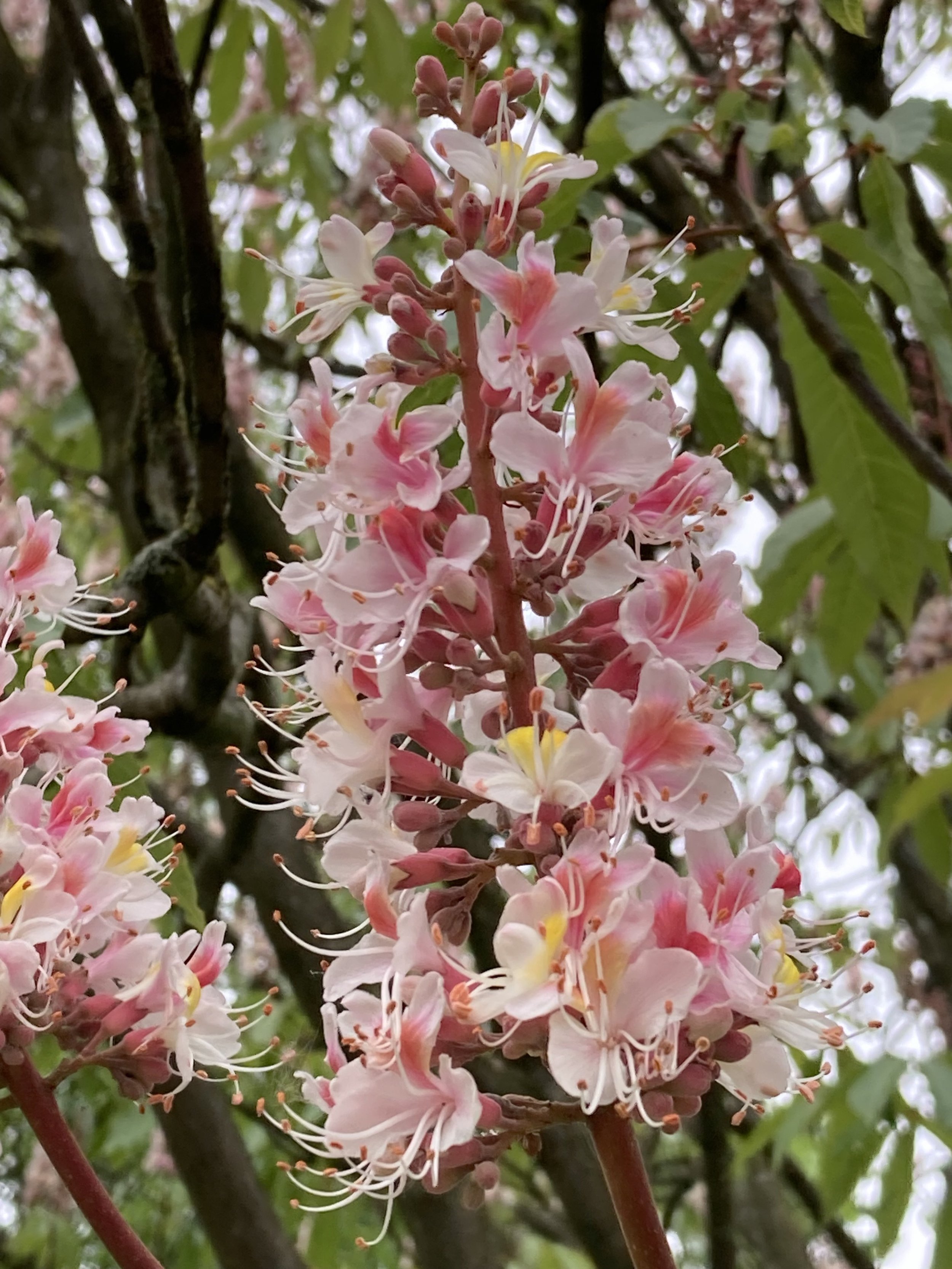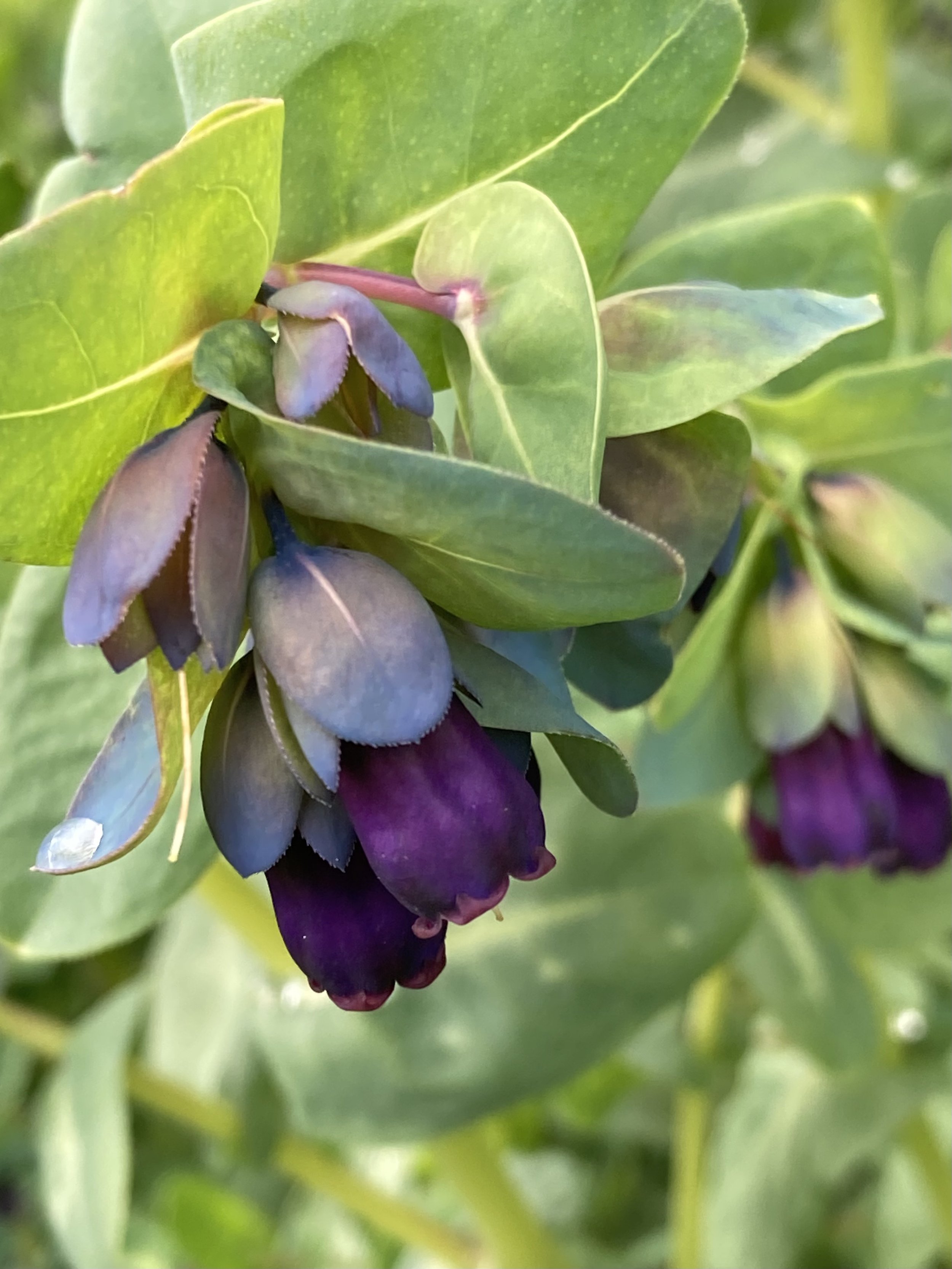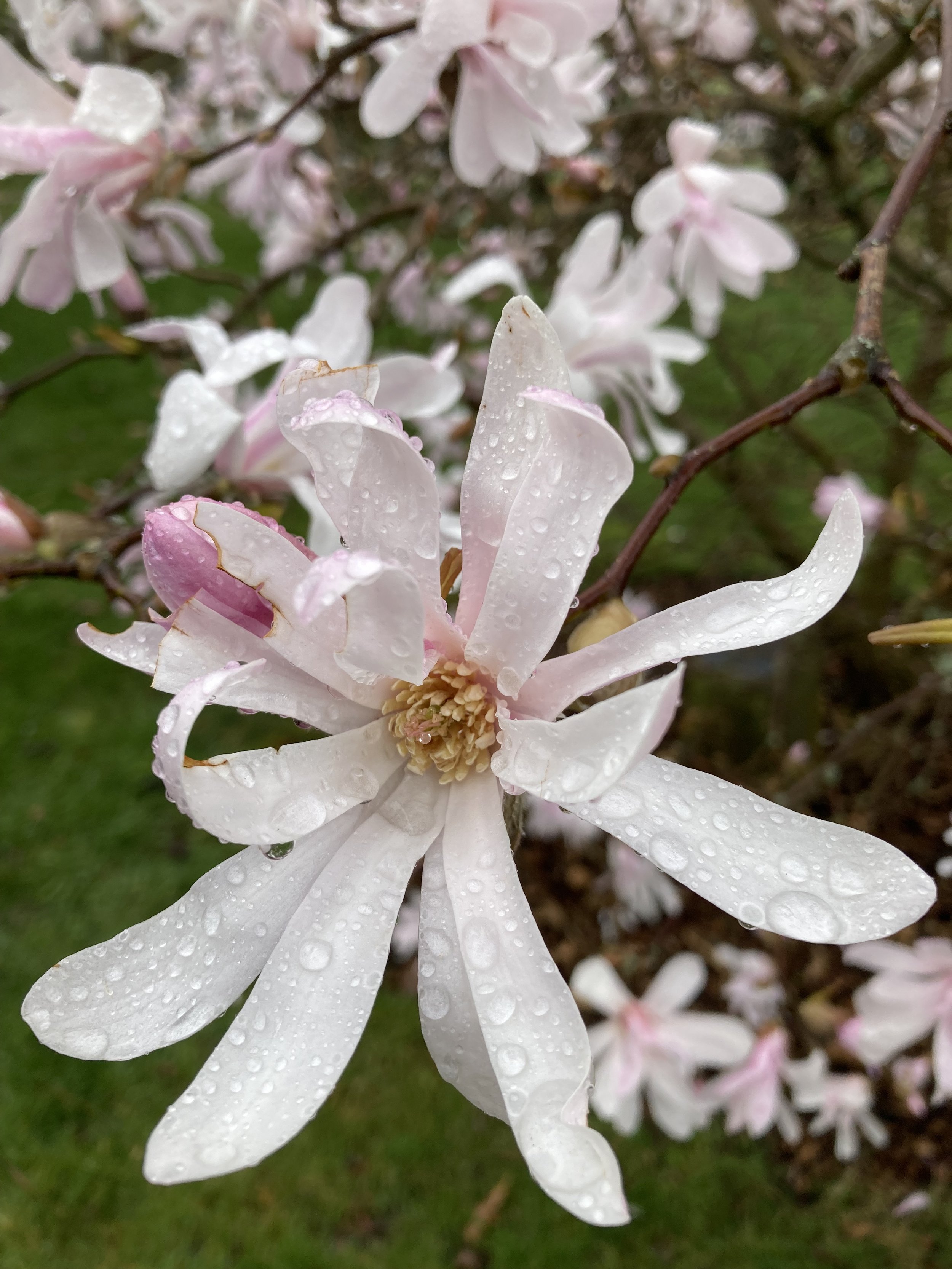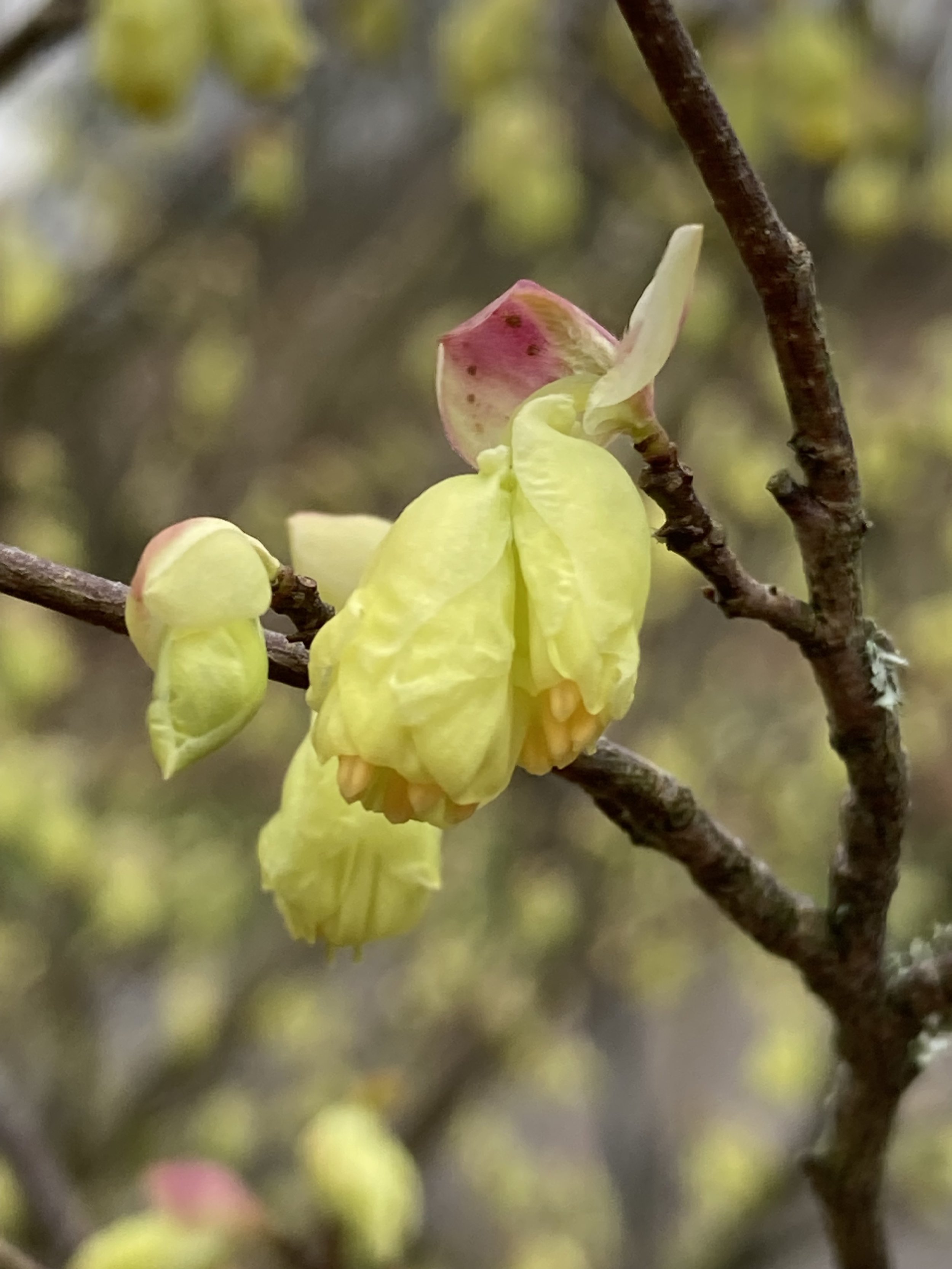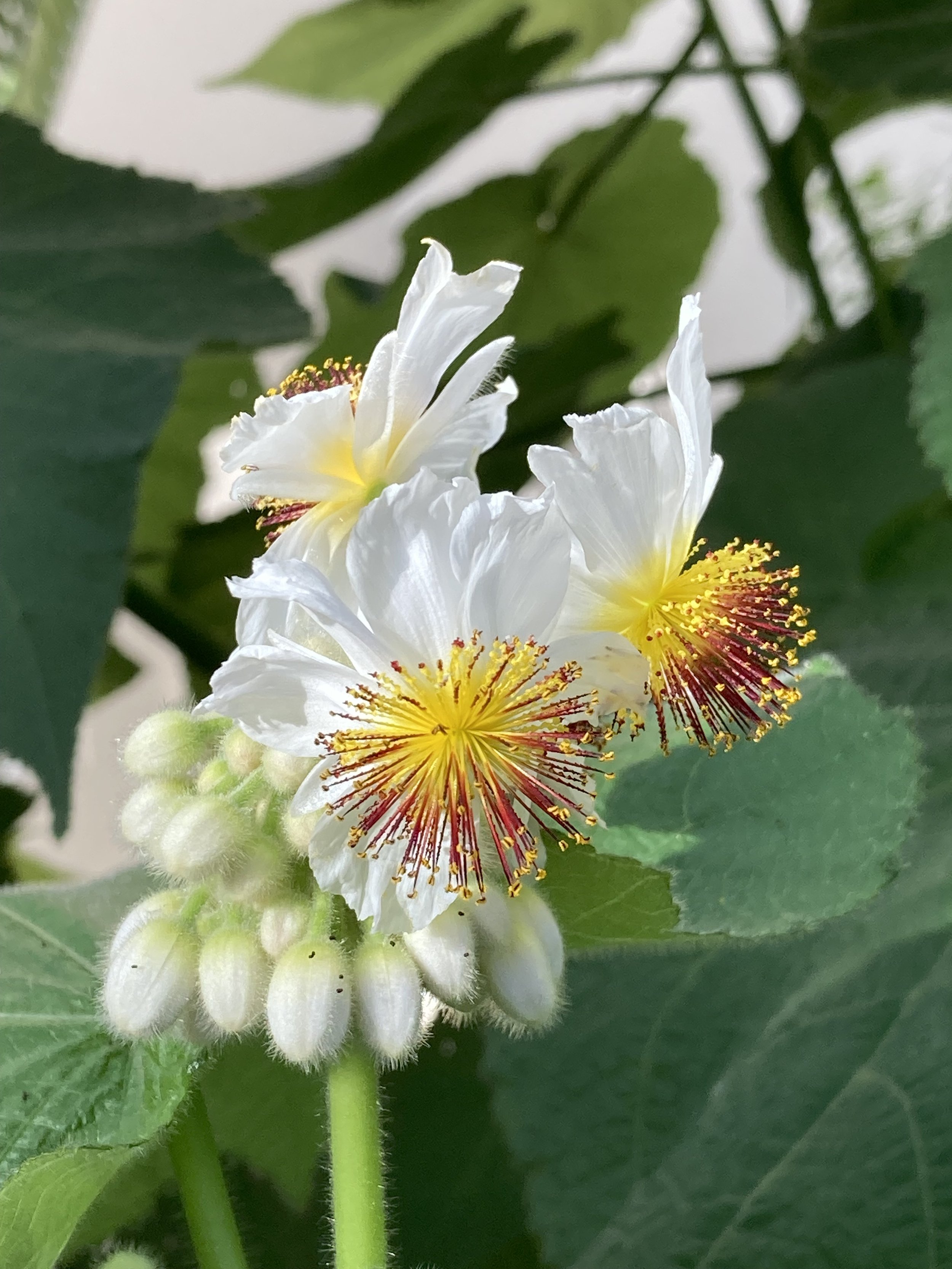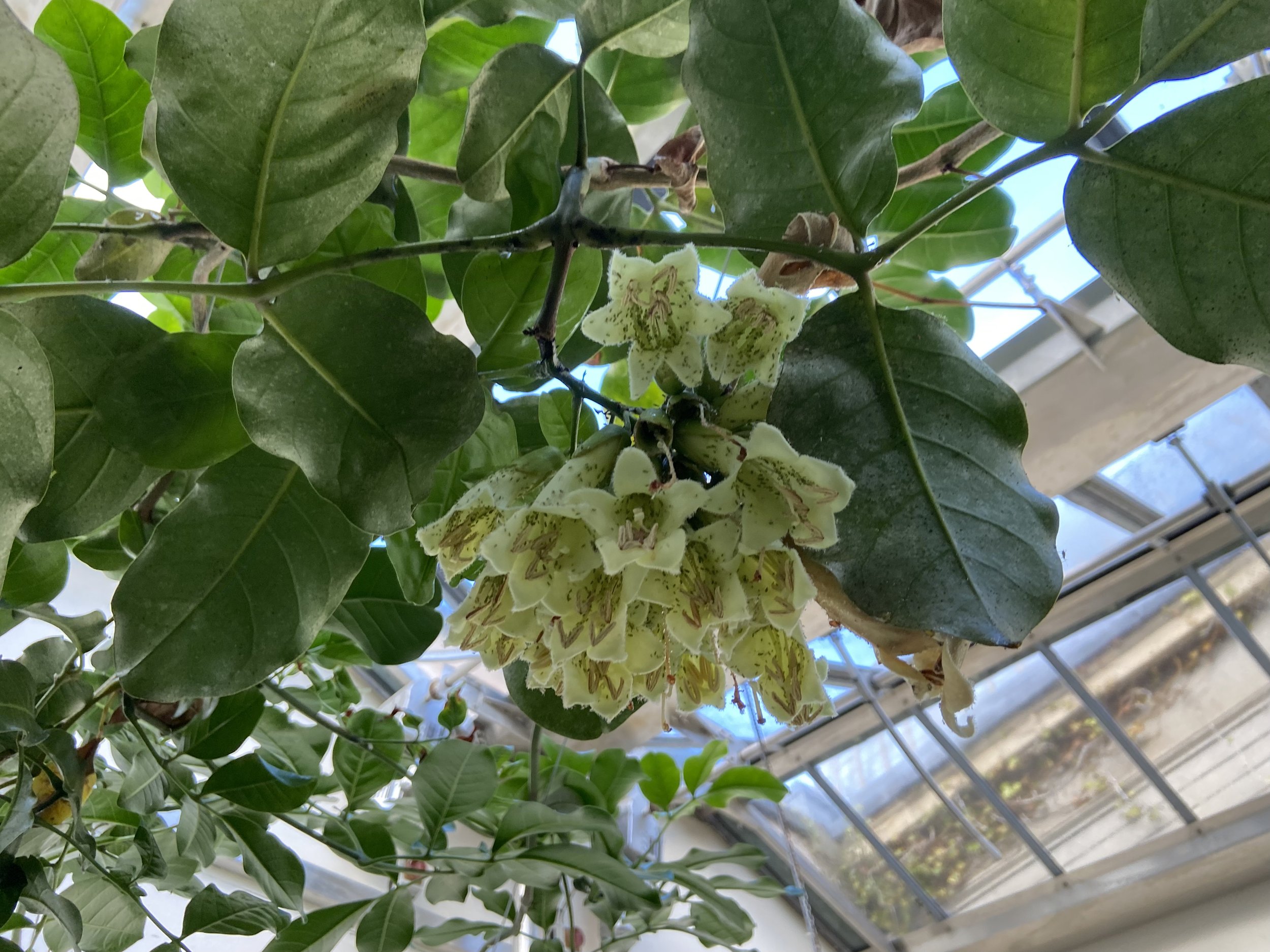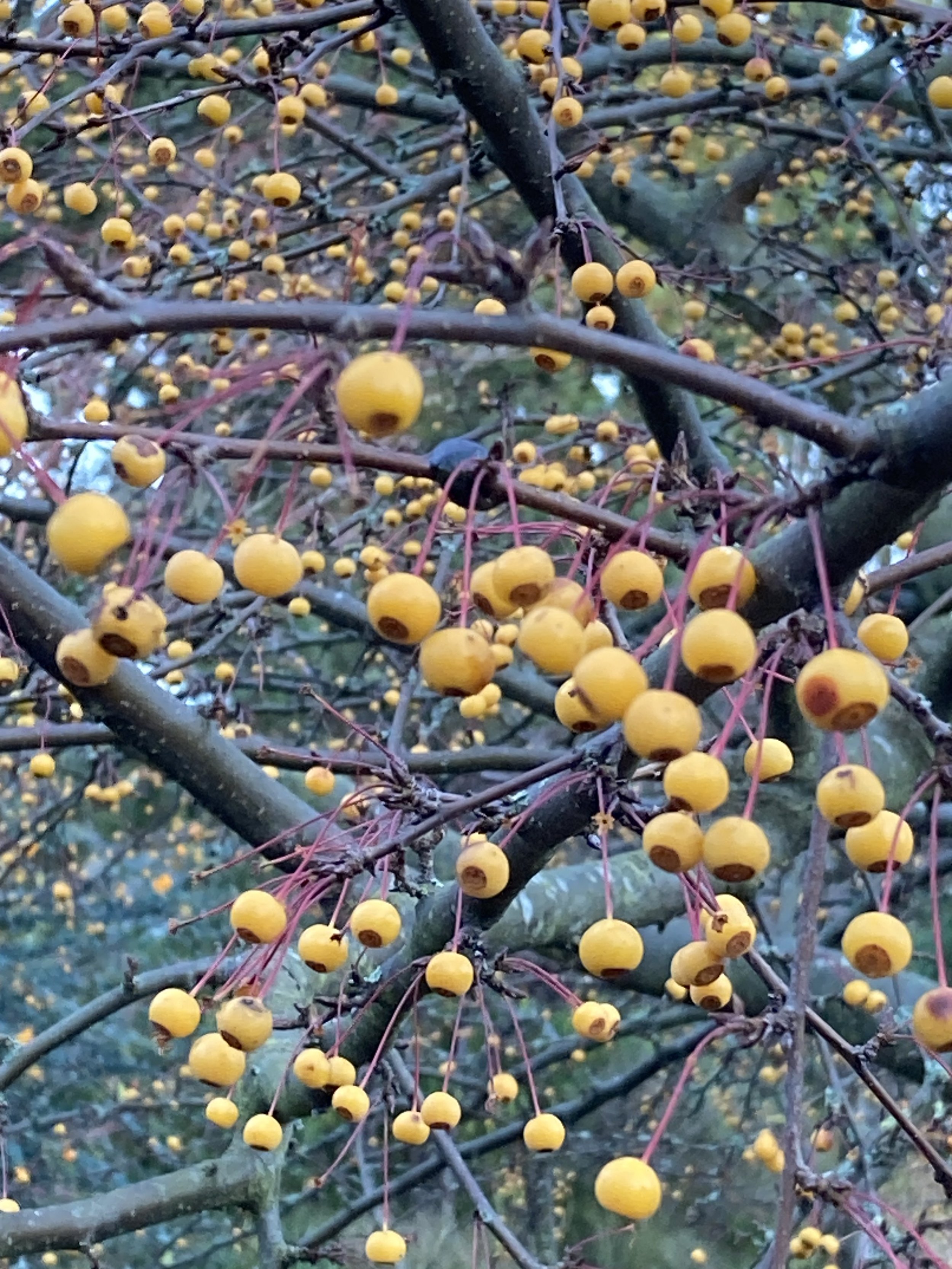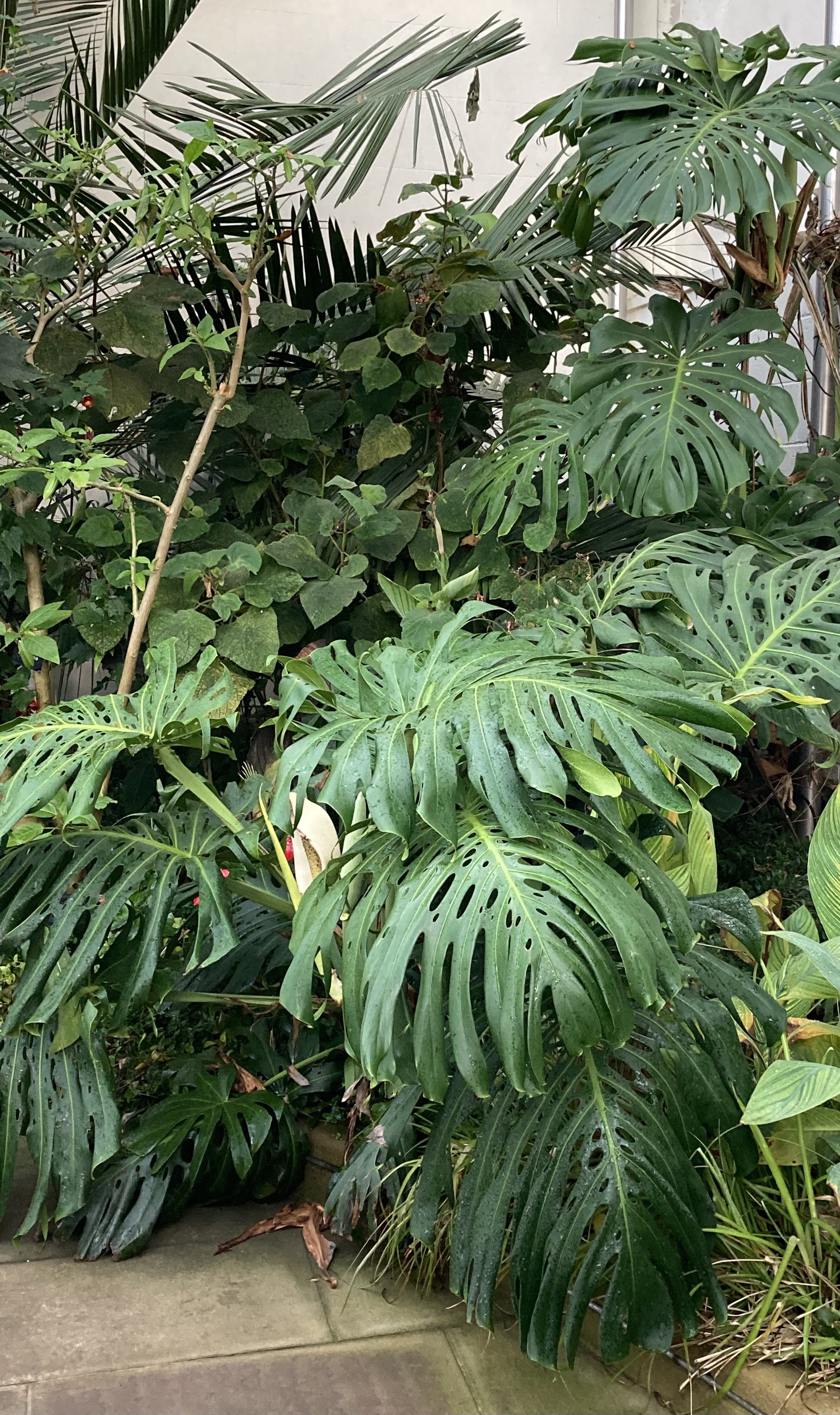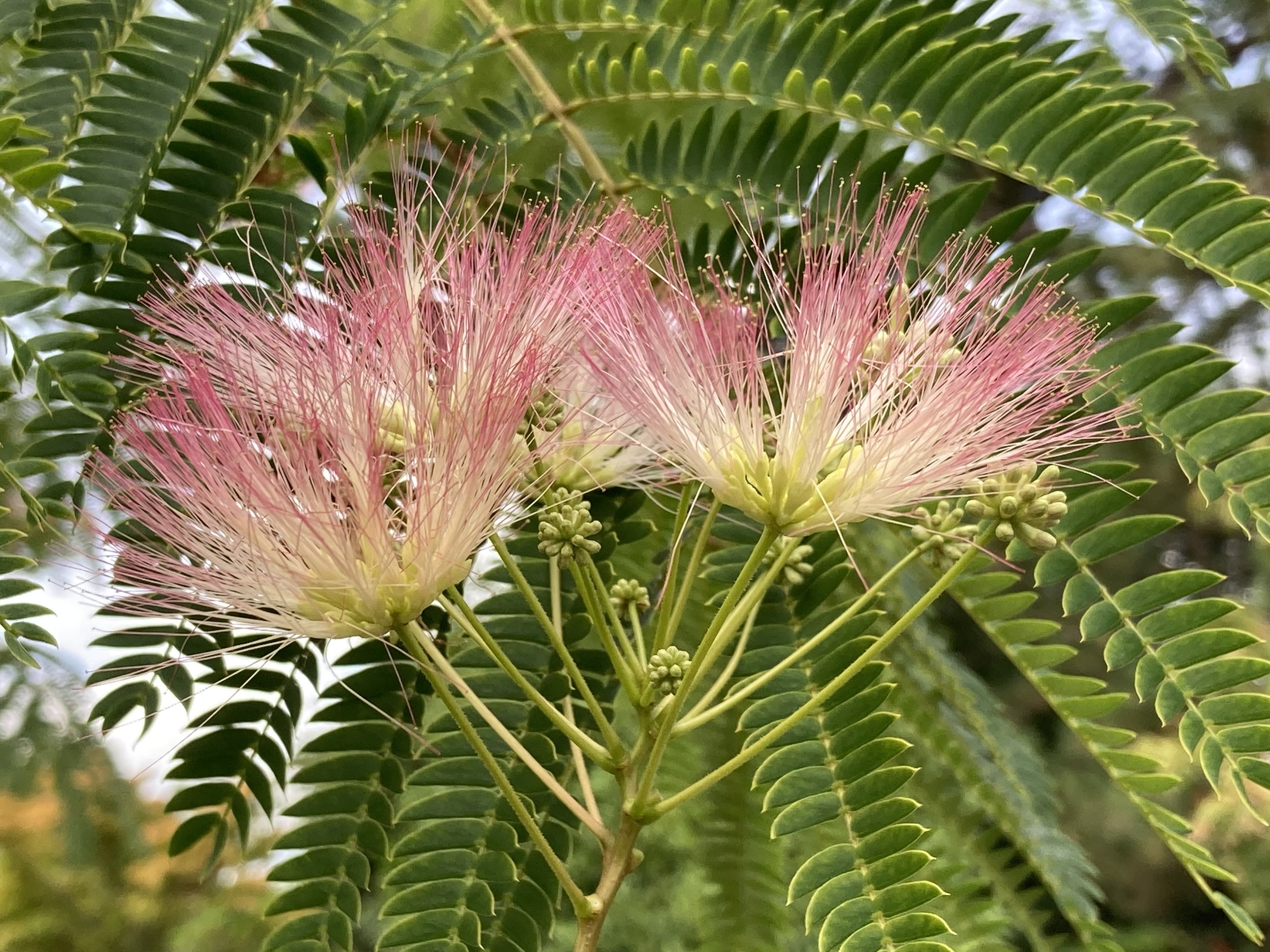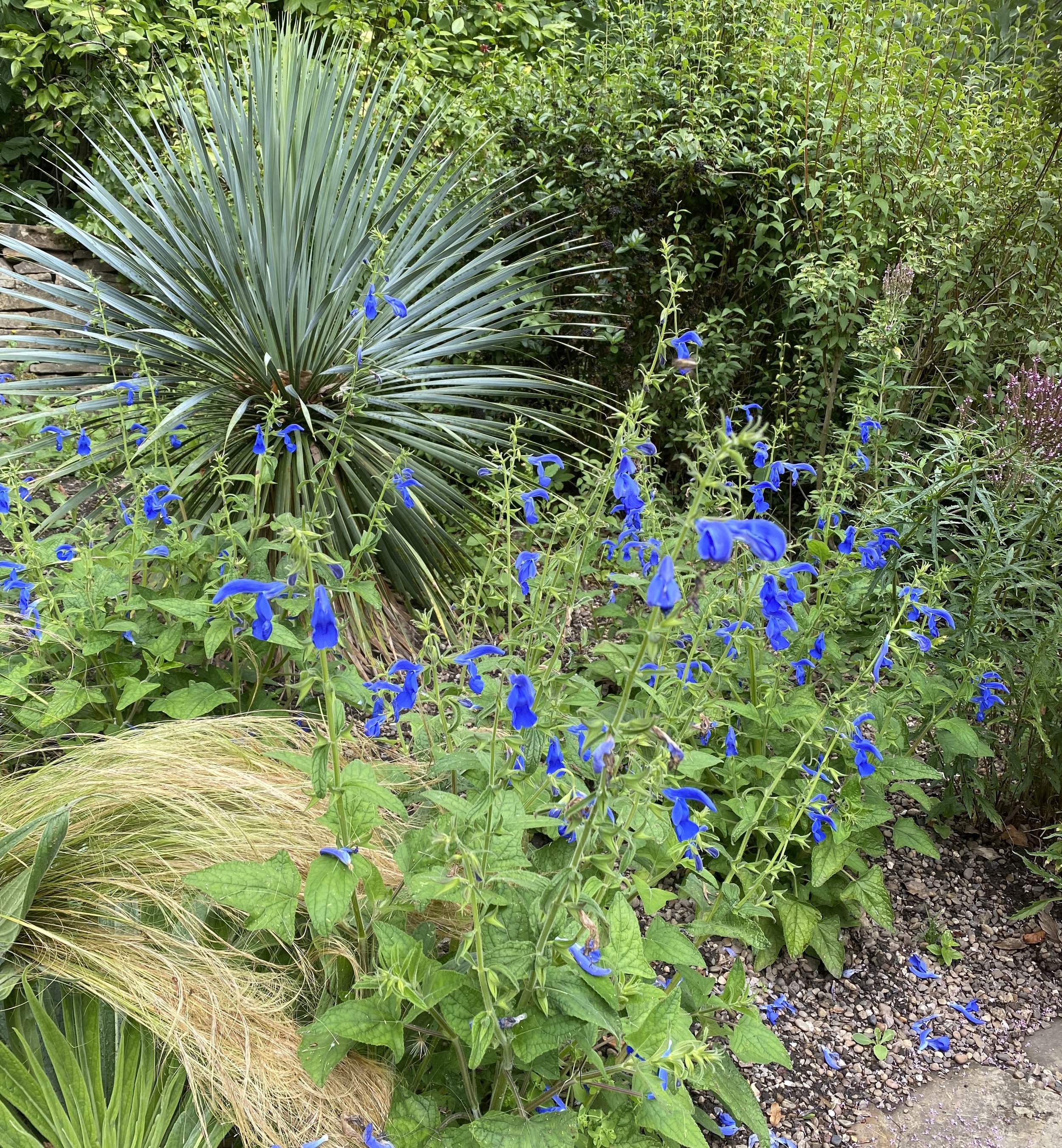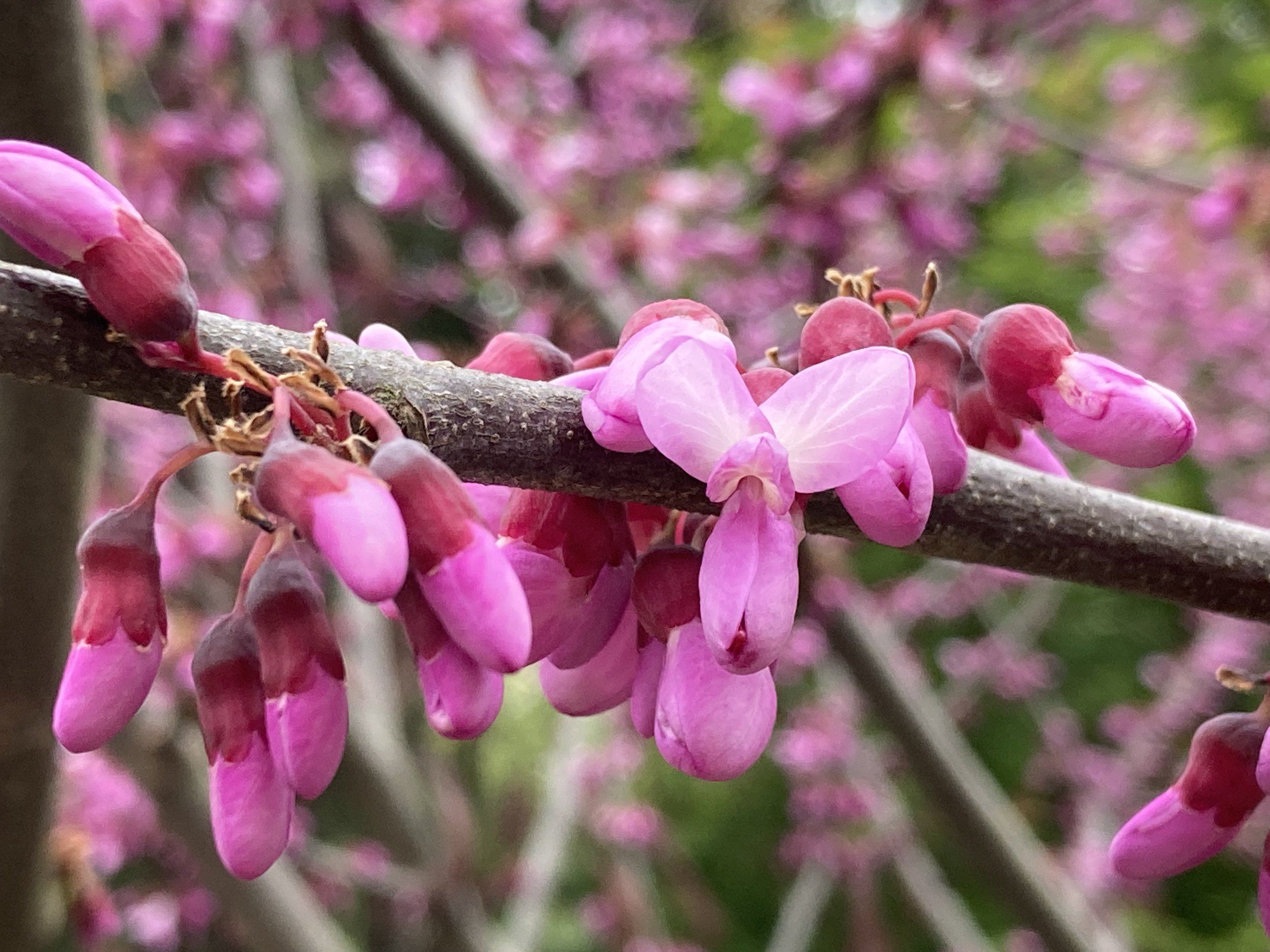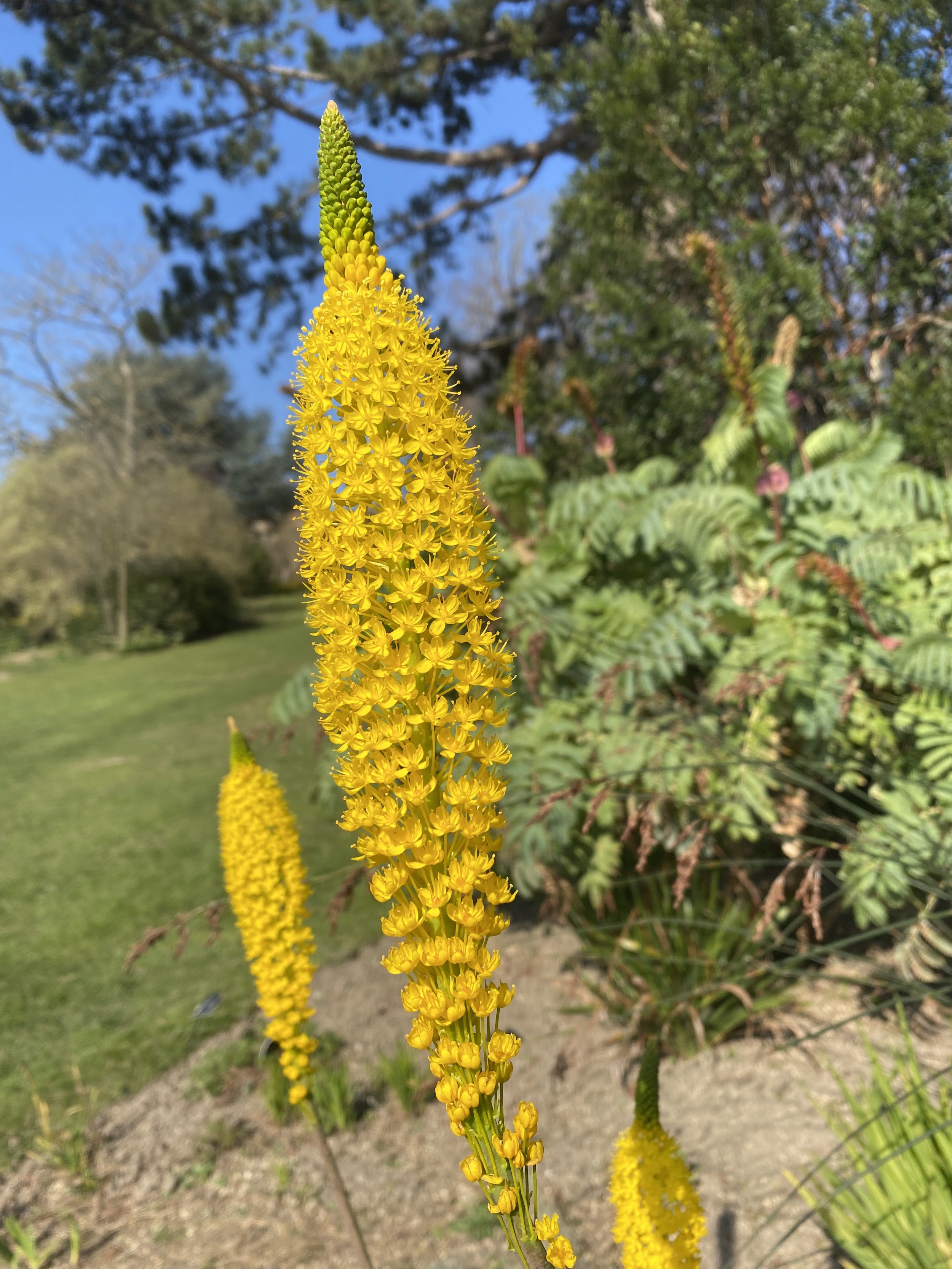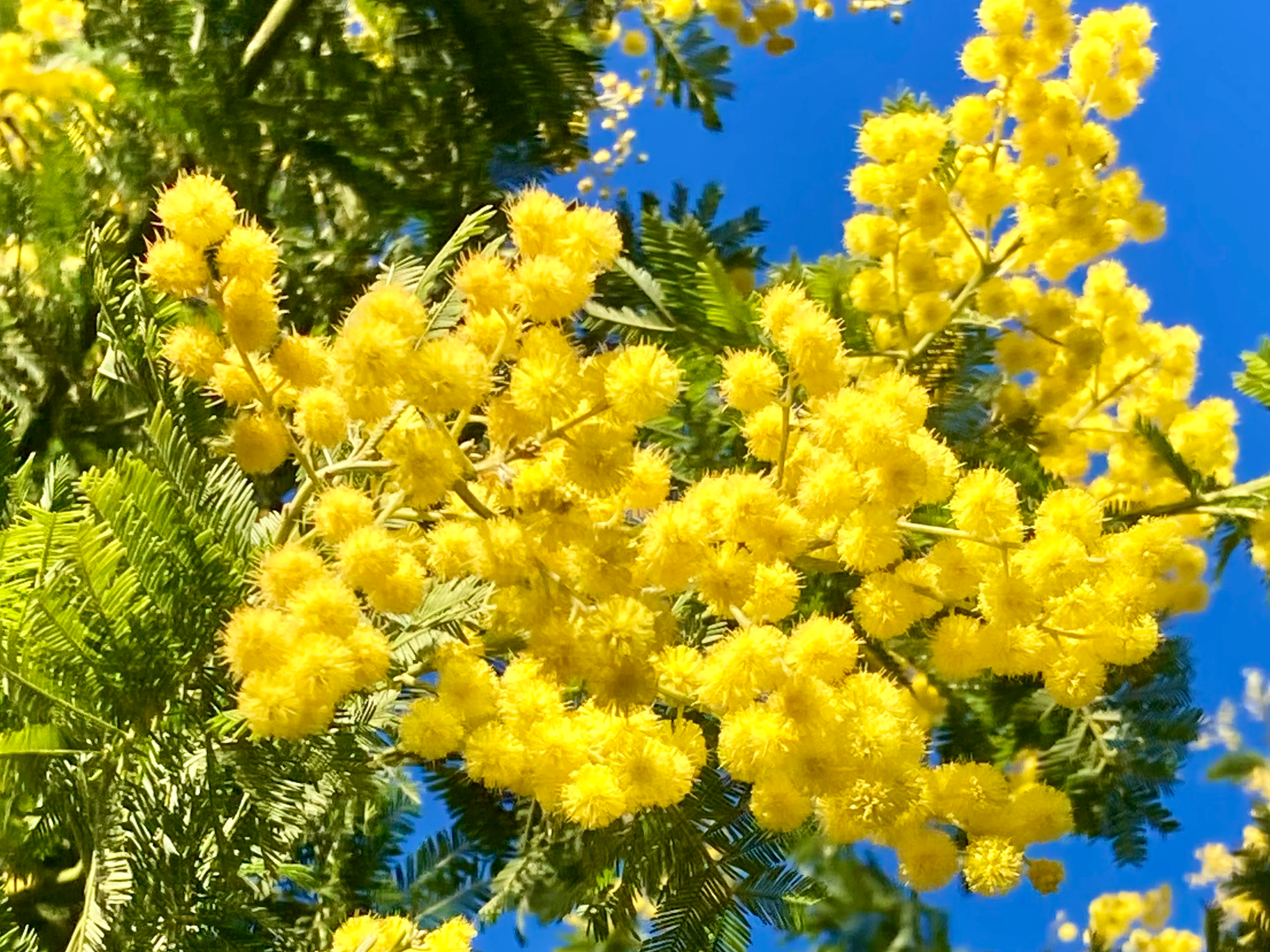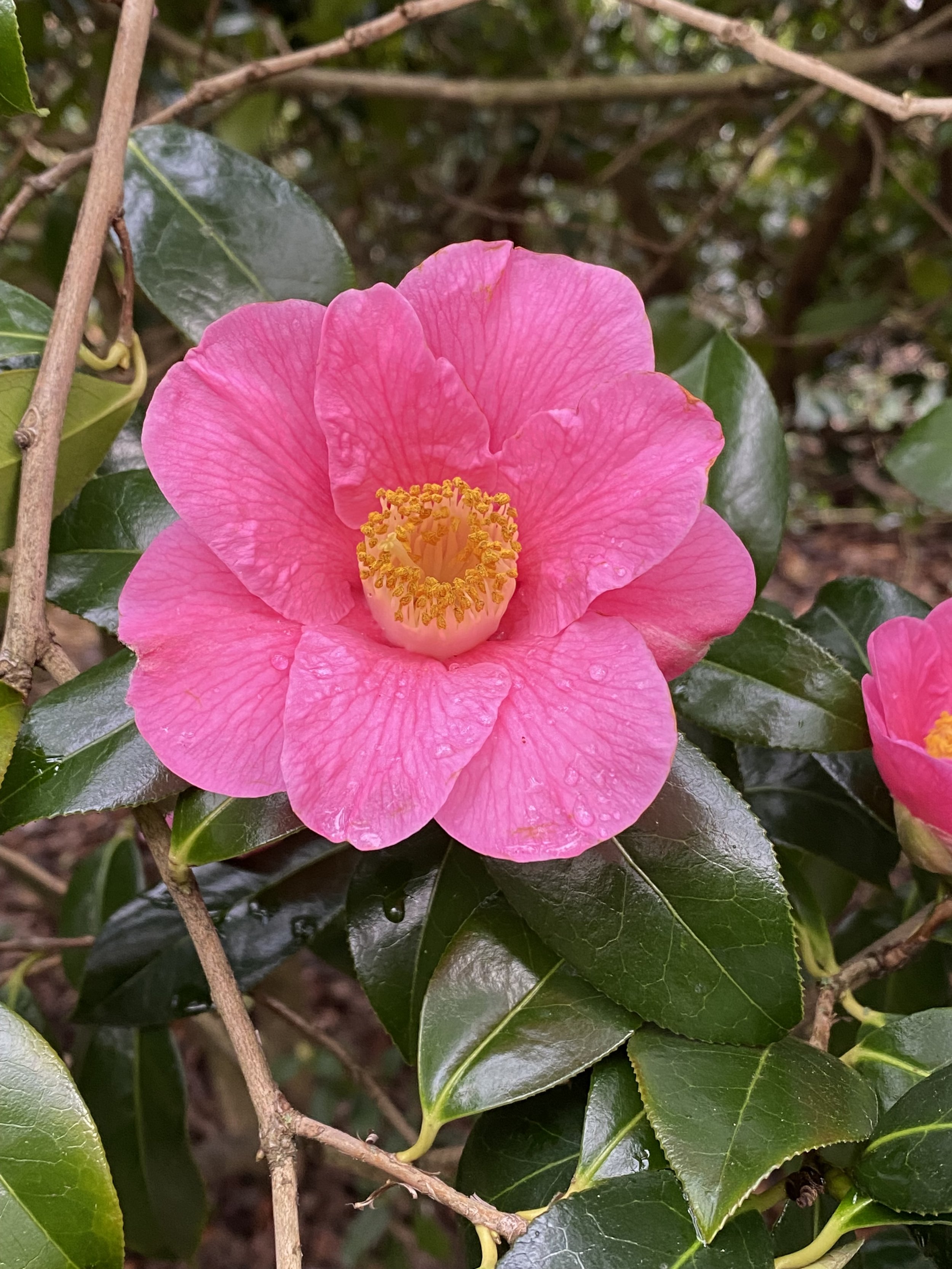Plant of the month
Each month we showcase a plant from the gardens.
Holodiscus discolor
In the northwestern USA where this elegant shrub originates, it’s known by the common name ‘ocean spray’ because of the masses of exquisite panicles of tiny white flowers. These are a magnet for bees.
Aesculus indica ‘Sydney Pearce’
The Indian horse chestnut cultivar Aesculus indica ‘Sydney Pearce’ in full bloom at the head of the drive leading from the Thompson Rd entrance is a spectacular sight.
Cerinthe major ‘Purpurascens’
For many years the seed of this unusual annual, which can grow as a short- lived perennial, has lain dormant at the top of the Mixed Borders. Suddenly a large clump of the blue-grey fleshy foliage and drooping blue-green bracts around tubular purple flowers has reappeared.
Magnolias
Fortunately the frosts in late March affected only a couple of the many beautiful magnolias flowering over many weeks in various parts of the Gardens. This primitive genus, pollinated by beetles before flying insects evolved, originated in east- and south-east Asia and north and central America.
Corylopsis pauciflora
This delightful plant puts on its show after the winter-flowering shrubs have finished and before most spring ones have started into flower. Ready to come into full bloom with a couple of warm days, Corylopsis pauciflora is an eye-catching little shrub at the steps going down to the Water Garden.
Sparrmannia africana
Even before its pretty flowers appear, Sparrmannia africana (African hemp) is a most attractive evergreen shrub. The large, soft, downy leaves are heart-shaped. Towards the ends of the branches clusters of up to 20 white flower buds hang from hairy stalks, revealing a puff of golden and red-purple stamens.
Tecomanthe speciosa
This twining and climbing evergreen grows vigorously in the New Zealand plantings of the Pavilions and this year has produced a couple of dense racemes of funnel shaped, pale yellow-green flowers. The story of the survival of this once extremely rare plant is extraordinary.
Malus transitoria
Of the many fine crab apples in cultivation, Malus transitoria is arguably the most beautiful. A wide spreading little tree, often as wide as it is high, its delicate, deeply lobed leaves become gold with pink and russet tints in autumn. In spring, the tree is a mass of tiny star-shaped white flowers, truly an arresting sight. These develop into small, rich yellow, round fruits which persist after leaf fall into early winter, hanging in profusion from every branch and twig.
Monstera deliciosa
Of the millions of people who have lived at some time in a home with a Swiss cheese plant (Monstera deliciosa), very few will have seen one produce fruit. This is rare indoors. Now is your chance, for the magnificent mature specimen in the Pavilions has started to fruit.
Parrotia persica
Those who designed the Four Seasons Garden along the path leading from Brocco Bank to the back of the Pavilions no doubt chose the site for the Autumn Bed because of the pre-existing magnificent specimen of Parrotia persica. The beautiful reds and golds of the foliage at this time of year make a lovely background for the colourful display of the perennial planting and several brilliant maples.
Albizia julibrissin ‘Rosea’
This beautiful little tree in the centre of the Marnock Garden can be admired from all around. It has responded to this summer’s heat with a lovely display of upright fluffy pink flowers over the spreading canopy.
Salvia Patens
Salvias have become very popular over recent years, but Salvia patens, the Gentian sage, has been used in British gardens for the past two centuries. The great Victorian gardener William Robinson wrote in his book, The English Flower Garden, that ‘It is one of the best plants in cultivation, the intense blue of its flowers making it a charming object. Though tender in most gardens, the tuberous roots are easily wintered in a frost-proof place’.
Romneya coulteri
Also known as Matilija or Californian tree poppy, this dramatic shrubby perennial provides a spectacular display in the AGM Border, above the top of the Thompson Road drive.
JOVELLANA VIOLACEA
Introduced from Chile, South America, in the mid 19th century, this semi-evergreen sub-shrub needs a very sheltered spot, because it is not tolerant of below-freezing temperatures. However, over the past eight years, since the Mediterranean climate garden was redesigned and replanted, this beautiful plant has been increasing its area, by sucker growth, and is now growing into its neighbours, and flowering very prettily.
Cercis siliquastrum
In the Rock and Water Garden a unique sight is the little multi-stemmed tree, Cercis siliquastrum, every young twig smothered in rosy-pink flowers with some on the old stems too, before the pretty heart shaped leaves appear.
Bulbinella latifolia subsp. latifolia
With seeds collected from the wild, this most attractive evergreen, clump-forming perennial is making its home in Sheffield. Collected from the Renosterveld in South Africa by Professor James Hitchmough of Sheffield University on a plant hunting expedition, the seedlings have been grown on in the South African garden area of Osborn’s Field.
Acacia dealbata
In 2008 the Royal Horticultural Society published ‘Opportunities for Gardeners’, a list of semi-hardy plants which it predicted would become more successful in the UK as the climate became warmer. One of these was Acacia dealbata, the silver wattle or mimosa, and here in the Mediterranean Climate Garden we have a lovely specimen with masses of clustered yellow flowers covered in stamens.
CAMELLIA X WILLIAMSII ‘ST. EWE’
In the 1940s the notable hybridist, J. C. Williams of Caerhays, Cornwall, crossed Camellia japonica and Camellia saluenensis. One of the first plants raised at Caerhays was the camellia ‘St. Ewe’ (named after a village in Cornwall). This is one of the earliest camellias to flower and the first blooms can often be seen early in January.
